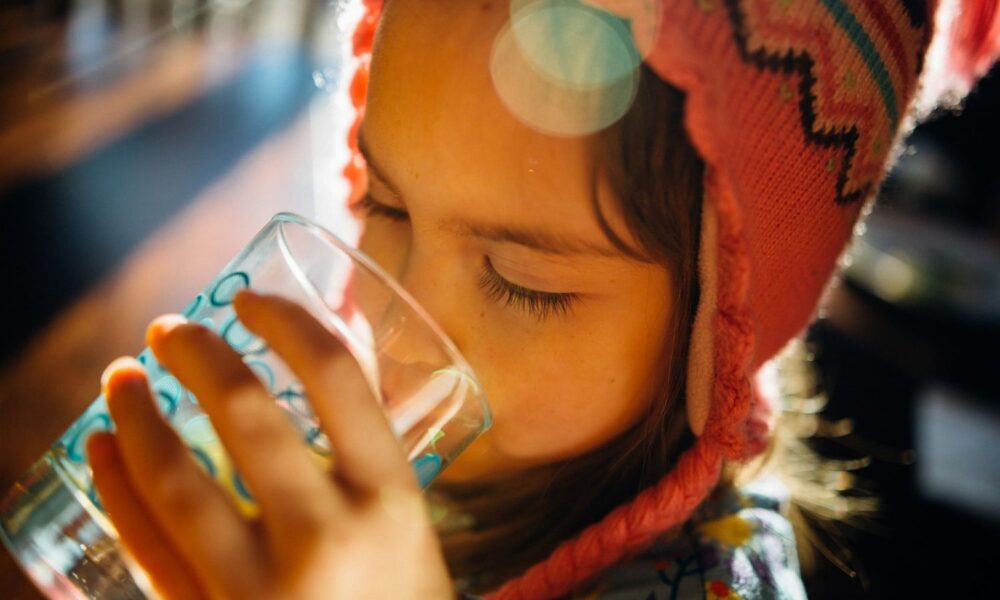This week is Drinking Water Week, but not everyone in America has the same access to safe, reliable running water, or a system for removing and treating wastewater when flushing toilets. Rural communities and communities of color are more at risk of unsafe water and inadequate sanitation due to historical disinvestment, regulatory failures, and structural racism.
This is the rural water gap, and while new federal funding is meant to address this gap, a study released today demonstrates that federal agencies need clearer metrics and milestones to ensure they reach the communities that need it most. Doing so would contribute to the Biden Administration’s commitment to Justice40 and environmental justice for all.
Before coming to UCS, I worked on this new study just released by the Community Water Center in California. We analyzed the US Department of Agriculture’s (USDA) investments in rural water and wastewater infrastructure projects. Between 2010 and 2021, the USDA Rural Utilities Service released $3.4 billion in grants and $6.2 billion in loans dedicated to drinking water and wastewater projects. The report found that of the nearly $10 billion invested, just $1.4 billion made it to majority-Black, Indigenous, and People of Color (BIPOC) communities.
This isn’t nearly enough to address the rural water gap marginalized communities of color face every day.
Every five years when the Food and Farm Bill is renegotiated and reauthorized there is an opportunity to fight for justice and climate resilience in rural communities by securing adequate investments in rural development. There are a lot of reasons why we should care about this year’s Food and Farm Bill, and promoting access to safe water and sanitation in rural communities is one of them.
Not enough federal funding for water infrastructure is going to communities of color.
Race is often the strongest predictor of water and sanitation access. Black and Latinx households are almost twice as likely to lack complete plumbing as white households, and Native American households are 19 times more likely than white households to lack indoor plumbing and live in plumbing poverty.
Yet communities with larger populations of color were less likely to receive funding from key federal programs intended for investing in water infrastructure. The new report analyzed more than 6,600 USDA projects and found that just 15% of projects were in majority-BIPOC communities.
The USDA Rural Utilities Service’s Water and Environmental Program funding portfolio is one of the few federal programs specifically investing in rural drinking water and wastewater infrastructure projects. The Community Water Center’s report analyzed this program’s investments over the last decade to determine the level of funding and number of projects that serve majority-BIPOC communities. The level of funding and number of projects that serve majority-BIPOC communities varies by Congressional District and by state. Certain congressional districts in places like California, Arizona and Texas and other rural areas in the south reflect a higher percentage of projects in majority-BIPOC communities (see map).

According to the analysis, overall, 30% of projects in California were in majority-BIPOC communities, including many Central Valley districts where organizations like the Community Water Center and Self Help Enterprises work.
One such community is Okieville in Tulare County.
Okieville residents were historically reliant on drought-vulnerable domestic wells but were able to form a new water system in 2015: the Okieville Highland Acres Mutual Water Company. In 2016, the new Mutual Water Company and Self-Help Enterprises were able to secure a $500,000 emergency community water assistance grant from the USDA to invest in water supply infrastructure.
Federal investments can provide invaluable co-financing for rural water system projects. Maria Gallegos Herrera, the California State Director of USDA Rural Development, explained in this interview, that her agency is “uniquely positioned to […] address long-standing water challenges because we provide loans and grants to rural people.”
Congress and USDA can close the rural water gap
The Rural Water Gap report shows that some, but not enough, of USDA’s Rural Development investments benefit rural communities of color, and as UCS previously explained: the USDA has a lot of injustice to repair. The report recommends four key things that Congress and USDA could do to close the rural water gap and ensure that their federal investments benefit communities that need it most:
1. USDA should conduct a robust racial equity analysis of its rural infrastructure investments in projects, grantmaking staff, and technical assistance providers to ensure funding is serving BIPOC communities and make the results publicly available as soon as possible.
The Community Water Center report offers an initial demographic assessment, but the agency should do their own. This suggestion aligns with the USDA’s Equity Commission recommendation to conduct periodic, system-wide equity audits and to support legislation that provides the USDA Secretary and senior leadership the authority to ensure their programs benefit all eligible rural residents and understand the drivers of inequitable participation in existing programs.
2. USDA should continue to build trusting and collaborative relationships with environmental justice and community-based organizations to inform USDA Rural Development priorities and better meet rural communities’ and Tribal Nations’ needs.
As outlined in the Equity Commission’s interim report: “Many individuals who have interacted with USDA have come away with the belief that discrimination, bias, or unfairness has played a significant role in limiting their access to services and benefits.”
The agency needs to build trust with underserved communities who are not accessing their funding program. One way is to invest in capacity building training and support to USDA Rural Development offices, USDA contractors, and existing and new non-profit technical assistance providers to strengthen their ability to engage and build trust with communities of color.
3. USDA should proactively, publicly, and transparently identify communities that may need assistance accessing safe water and improved sanitation, including prioritization of communities of color historically underfunded by USDA programs.
A national “rural water access” list could look like what we have in California. The State Water Board, the agency that regulates drinking water systems, keeps a publicly available list of “failing”, “at-risk” and “potentially-at-risk” water systems in their 2023 Needs Assessment dashboard. The dashboard also shows the amount of state funding leveraged to support them. Collaboration on this list by the US EPA, USDA Rural Development and Offices of Tribal Relations, alongside the Indian Health Services could ensure the government identifies all underserved and historically marginalized communities with inadequate water and sanitation services.
4. Through the Farm Bill and 2024 budget appropriations, Congress should increase crucial investments, especially grants and low-interest loans, in BIPOC rural communities.
The Biden Administration and USDA are committed to the Justice40 initiative and environmental justice for all. Federal investments like the Food and Farm Bill are crucial to ensuring federal agencies like the USDA are making progress toward that commitment. USDA investments contribute to ensuring that everyone has reliable access to water and sanitation, even though some communities face obstacles accessing funding.
With this year’s Food and Farm Bill, there is an opportunity for Congress to help the USDA Rural Development agency better serve all rural communities and remove obstacles while aligning with the whole-of-government Justice40 Initiative and the agency’s own Equity Commission recommendations. Doing so will require innovative approaches, resources and support for staff and technical assistance contractors intended to help meet President Biden’s vision for equity and justice in all communities.
As individuals, we can also make a difference by supporting grassroots organizations working on the ground to address the rural water gap, and by contacting our elected officials to urge them to prioritize equity in water infrastructure funding in the Food and Farm Bill. Together, we can help close the rural water gap and ensure that every community has access to safe and reliable water and sanitation. Find out more ways to take action here.

